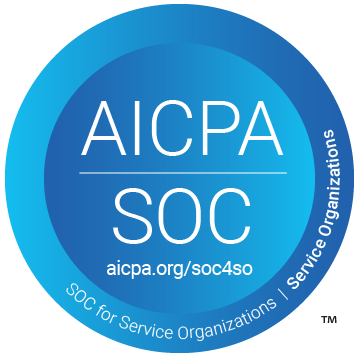- Why Only 31% of Work Becomes Revenue?
- Why Are Legal Translation Delays a Major Risk to Revenue?
- How Does Delayed Timekeeping Cost Law Firms Billable Hours?
- What's the Hidden Cost of Legal Admin and Task Switching?
- Why Does Fragmented Document Versioning Drain Legal Resources?
- How Are Law Firms Misusing Legal Talent, and What Can They Do About It?
- Key Takeaways
- The Bottom Line: Operational Leaks Become Revenue Losses
- FAQs: Recovering Billable Time Through Workflow Optimization
- Next Steps
Why Only 31% of Work Becomes Revenue?
In mid-sized and large law firms, revenue leakage is a growing concern. On average, lawyers bill just 2.9 hours per day, and only 31% of their work time translates into collected revenue (Clio, 2024). That gap represents millions in unrealized revenue across departments, practice groups, and firms.
A major contributor to this lost time is operational friction. Lawyers often spend hours coordinating tasks, locating documents, managing follow-ups, and handling translations.
Today, many firms are exploring more structured ways to address these challenges. By assessing legal technology, improving delegation, and streamlining workflows, they aim to recover time that often goes unbilled. Research shows that up to 74% of traditionally billable legal tasks could be automated using A.I., including document review, communication, and translation (RunSensible, 2024).
Translation is one of the most overlooked workflows in this process. Yet, it offers one of the clearest opportunities to reduce inefficiencies and recover lost hours.
The following sections explore the most common operational points where law firms lose billable time and what can be done to improve them.
Want to pinpoint the gaps in your workflow?
Why Are Legal Translation Delays a Major Risk to Revenue?
Translation gaps stall progress and cut into profits.
Multilingual legal matters frequently introduce delays that reduce productivity and impact revenue.
According to the 2024 Thomson Reuters Legal Department Operations Index, 75% of in-house legal departments identify simplifying workflows and manual processes as a top priority. Despite this, many firms still manage multilingual legal content using disconnected systems and email threads. (Thomson Reuters, 2024)
Translation delays force legal professionals to divert time away from billable work. Without streamlined processes, teams spend valuable hours on coordination, version tracking, and follow-ups, instead of advancing client matters.
To address the issue, more firms are introducing AI tools to improve speed and consistency. However, general-purpose platforms raise concerns about privacy, data security, and compliance. For law firms, an A.I. solution must be designed specifically for legal workflows and governed by strict data protection standards.
Legal-specific translation platforms offer greater control, consistent output, and built-in confidentiality safeguards. With Alexa Translations translation solutions, firms save up to 50 percent on translation-related costs and save valuable administrative time.
“When tight deadlines are your daily reality, you need service providers who know you so well they operate like an extension of your department. That’s what Alexa Translations does so well.” — McMillan LLP
Steps to Streamline Legal Translation:
- Implement AI-based legal translation tools with certified human oversight.
- Use platforms that maintain version control in multiple languages.
- Integrate translation planning into legal project timelines from the start.
Cut translation-related admin by up to 50%
How Does Delayed Timekeeping Cost Law Firms Billable Hours?
Late entries mean lost time and missed revenue.
Accurate timekeeping is critical to protecting a firm’s revenue. However, many lawyers postpone recording their hours until the end of the day or week. This often leads to incomplete or inaccurate entries.
Firms routinely lose between 25 and 50% of potentially billable time when time entries are postponed or reconstructed from memory. (LeanLaw Guide, 2025)
“Lawyers often postpone entering their time, relying on memory to reconstruct their day. This practice, known as ‘reconstructive billing,’ increases the likelihood of underbilling and risks creating invoice inaccuracies, damaging client trust.” — (Accountants Law Lab, 2025)
Translation delays can intensify this issue. Waiting for multilingual deliverables often stops lawyers from entering related work in real time. When the translation arrives later, that work may no longer be entered at all, which results in irrecoverable revenue.
To address this, firms are introducing same-day entry policies and adopting automated timekeeping tools that track activity in real time, prompt lawyers to log hours, and reduce reliance on manual reporting.
Actions to Improve Timekeeping Accuracy:
- Enforce same-day time entry firmwide
- Use timekeeping software with passive tracking and reminders
- Coordinate translation deadlines with billing cycles to prompt timely entries
Improve efficiency and protect revenue. Is your firm leaving revenue on the table?
What’s the Hidden Cost of Legal Admin and Task Switching?
Routine tasks quietly drain productivity.
Lawyers spend a significant portion of their day on tasks that do not generate revenue. These include checking document status, responding to internal emails, formatting files, and managing intake steps. Much of this work could be standardized, automated, or delegated. When it isn’t, valuable time is lost. These interruptions slow down progress on legal work and reduce realization rates.
Research from the McKinsey Global Institute found that professionals spend up to 28% of their workweek on email and administrative coordination rather than high-value tasks (McKinsey, 2012). Additional studies show it can take as long as 23 minutes to regain focus after each interruption (University of California Irvine).
Translation workflows are a common source of administrative drag. Without centralized intake and tracking, lawyers often manage scoping, follow-ups, and version control on their own. The same challenge applies to other routine activities, such as onboarding, status updates, and formatting. When support resources are limited or processes are inconsistent, billable time is lost.
Recommended Actions to Reduce Administrative Burden:
- Assign translation and administrative coordination to legal assistants or operations leads.
- Use standardized intake templates and project briefs across teams.
- Automate recurring administrative tasks such as formatting, internal updates, or document requests.
Reduce administrative drag and recover billable time.
Why Does Fragmented Document Versioning Drain Legal Resources?
Poor version control leads to rework and risk.
Inconsistent document versioning creates risk and rework across multiple legal workflows. In M&A, litigation, and regulatory filings, even small discrepancies between drafts can delay execution, trigger disputes, or result in errors. Without centralized version control, teams spend unnecessary time locating the most current file, reconciling edits, or correcting formatting.
In bilingual jurisdictions like Québec, version control becomes even more complex. If French and English versions of a document are not properly synchronized, law firms may face compliance risks, delays, or challenges to enforceability. (Stikeman Elliott, 2023)
Translation workflows often introduce further fragmentation. Updates made to the English draft are not always reflected in the French version, requiring manual checks or full retranslations. This delays timelines, adds administrative burden, and reduces confidence in document accuracy.
Steps to Strengthen Version Control and Multilingual Alignment:
- Use document management systems that centralize access and track changes across teams.
- Implement translation memory tools to avoid redoing approved clauses.
- Apply QA checklists to ensure consistency across all language versions and jurisdictions.
Improve efficiency, reduce risk, and support compliance across workflows.
How Efficient Is Your Firm at Capturing Billable Hours?
How Are Law Firms Misusing Legal Talent, and What Can They Do About It?
Lawyers spend too much time on low-value work.
Many lawyers in mid-sized and large Canadian law firms spend time on work that does not require their expertise. Tasks such as translation coordination, formatting bilingual contracts, tracking document edits, and onboarding fall outside the core value chain. This results in suboptimal use of legal talent and reduces revenue capture.
According to the 2024 State of the Canadian Law Firm Market Report by Thomson Reuters Institute, 29% of firms cite that lawyers spend too much time on administrative tasks rather than legal work, second only to the challenge of recruiting and retaining legal staff (Thomson Reuters Institute, 2024). This underlines the opportunity cost when high-value professionals are diverted from client-facing responsibilities.
Ways to Improve Lawyer Utilization:
- Automate administrative workflows like client intake, document prep, and internal status updates using legal tech tools.
- Delegate non-billable coordination tasks to legal operations or support staff.
- Use a specialized legal AI translation tool that offers up to 95% accuracy and reduces translation costs by up to 50%.
Increase lawyer utilization and reclaim time.
Key Takeaways
- Translation delays and manual workflows are a significant source of lost revenue and underutilized legal professionals.
- Time can be recovered by shifting administrative coordination away from high-value legal staff.
- Fragmented document versioning increases compliance risk and causes rework, especially in bilingual environments.
- Automation and delegation through legal operations tools improve efficiency and free up lawyers to focus on client work.
- Purpose-built legal AI translation tools can improve accuracy, protect data, and reduce costs by up to 50%.
The Bottom Line: Operational Leaks Become Revenue Losses
Recovering billable hours is not just about lawyer discipline. It requires structure, efficient workflows, clearly defined roles, and technology that reduces administrative burden. Each operational bottleneck contributes to revenue leakage and affects profitability.
According to the 2025 EY Law General Counsel Study, 75% of legal departments are refining or developing their legal technology and data strategies, recognizing this as a strategic imperative even amid budget constraints and external disruption (EY Law GC Study, 2025)
Firms that focus on operational improvements, rather than relying solely on individual effort, are more likely to recover lost billable time, improve realization rates, and build a legal function that is resilient and efficient.
Ready to pinpoint where billable time is slipping away in your firm?
FAQs: Recovering Billable Time Through Workflow Optimization
1. Where are law firms most commonly losing billable time?
Time is often lost to delayed timekeeping, manual admin tasks, inefficient translation coordination, and inconsistent version control, especially in multilingual matters.
2. How can we tell if translation workflows are affecting our bottom line?
Check for signs like turnaround delays, repeated revisions, or lawyers spending time managing language tasks. These are indicators of revenue leakage tied to workflow inefficiencies.
3. Does automating translation or admin work reduce billable hours?
No. It reduces non-billable work and allows legal professionals to redirect time toward high-value tasks.
4. Are bilingual lawyers still necessary if we use legal translation technology?
Yes, but their role should focus on review and oversight. Technology can manage the bulk of the process, freeing up their time for strategic legal work.
5. How can we start improving our internal workflows?
Begin with a structured review of your processes. The Billable Hours Optimization Checklist can help you identify gaps and prioritize quick wins.
Next Steps
If you recognize even one of these bottlenecks in your workflow, it’s time to take action.
Reclaim your time. Reinforce your margins. And refocus your lawyers on the work that matters most.














